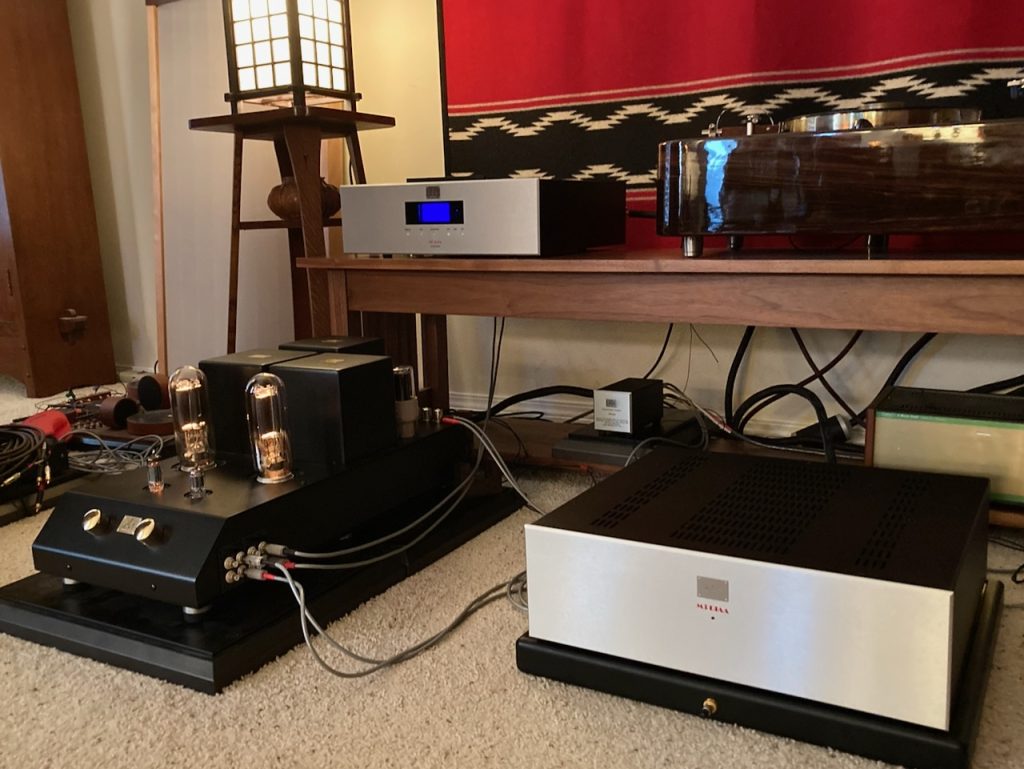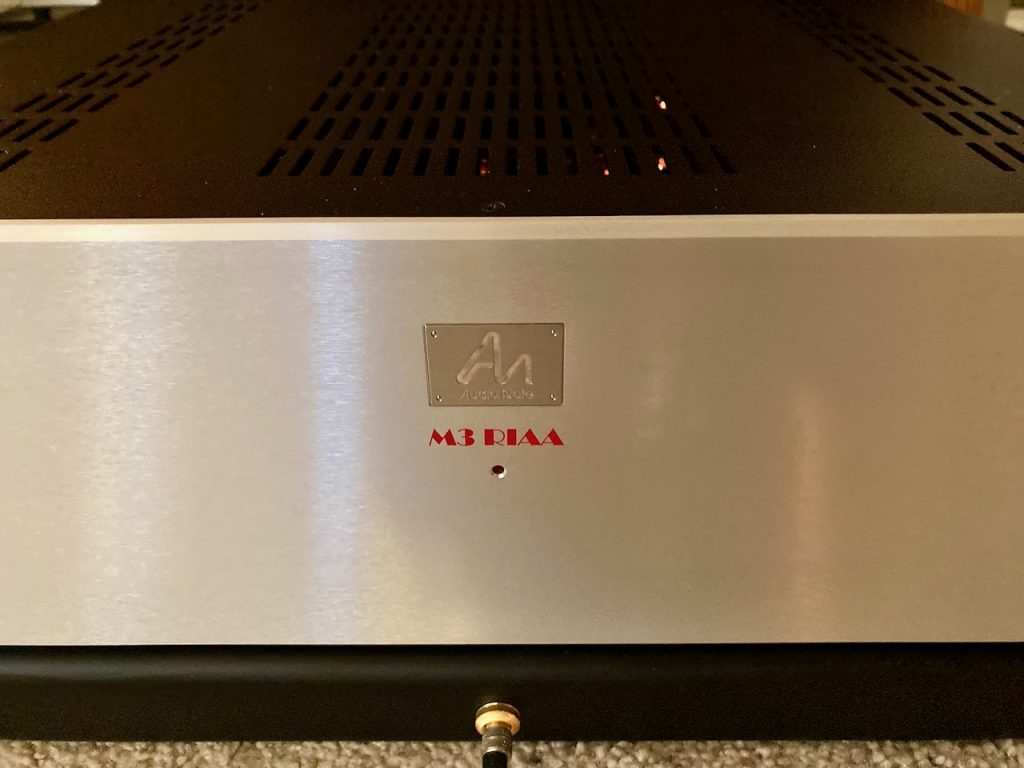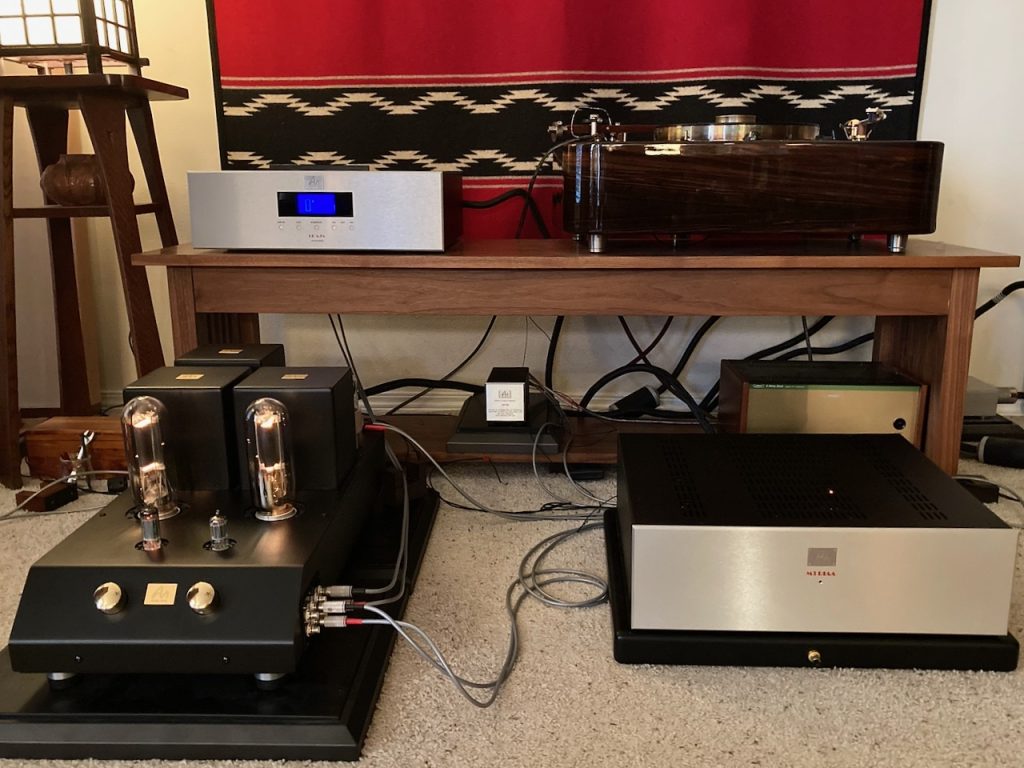Greetings friends, I hope you are doing great this Holiday Season!

Tomei 211 SET integrated amplifier (left, $59,587.00 USD ), M3 RIAA phono pre (right, $11,314.00 USD)
For yours truly it feels like its already Christmas, with the arrival of the Audio Note (UK) Tomei 211 SET integrated amplifier (HERE), and now the Audio Note (UK) M3 RIAA phono preamplifier.
The Tomei 211 SET integrated amp is blowing my mind, it is the highest performing amplifier I've ever heard on my Tannoy Westminster Royal SE loudspeakers, and by quite a margin.
Beautifully natural tonality, unrivaled recovery of nuance and subtleties from the music, astonishing level of musical engagement, and superb dynamics across the very very soft to wowza! loud spectrum.
I'll have a lot more to say about the Tomei in the future, suffice it to say for now I'm completely blown away by its level of performance.
However, this Today's Fresh Catch story is all about the heady Audio Note (UK) M3 RIAA phono preamplifier.
Yesterday the nice man from DHL knocked on the door and delivered the Audio Note (UK) M3 RIAA phono pre, and as you can imagine, I immediately unboxed it to ogle its beauty.
The M3 RIAA phono pre weighs more than a lot of power amplifiers at 35 pounds (16 kilos), and like the Tomei, it qualified as a free-weight lifting workout getting it out of its shipping container. Whew!
In Audio Note (UK) level terms, the M3 RIAA phono pre fulfills all of Audio Note (UK)'s Level 3 criteria of pure Class A operation, zero negative feedback, single-ended circuit topology, valve rectification, and materials and component quality (tantalum resistors, copper foil signal capacitors, custom electrolytic capacitors, custom Audio Note (UK) output transformers, etc.).
To quote the Audio Note (UK) website description of the M3 RIAA:
"The M3 Phono Pre Amplifier features an ECC82 and 5687WB line stage, powered by a 6X5 valve rectified power supply based on the M10's Galahad PSU. This power supply also features an ECL82 for voltage regulation and a 5651 for voltage stabilizer. Audio Note (UK) copper wiring, a mix of our standard and AN(UK) tantalum resistors in key areas, Audio Note (UK) copper foil signal capacitors and our custom electrolytic capacitors are used throughout the circuit, along with in-house designed and manufactured, custom Audio Note (UK) output transformers which feature I-E M4 cores and copper windings. Additionally, it features an exceptionally fine Moving Magnet phono stage which uses three GE 5670 valves, Audio Note (UK) copper foil signal capacitors and its own dedicated, valve regulated and rectified power supply."
Check out the diagram above that shows the interior layout of the M3. Note at the bottom of the diagram that it says the RIAA version of the M3 utilizes 10 vacuum tubes in its design. Impressive.
After we get into the New Year, I'll be asking Audio Note (UK) amplification design wizard, Andy Grove, if he would tell us a little more about the M3 RIAA - the 'inside scoop' so to speak - so I'll be looking forward to hearing what Andy has to say.
After unboxing I installed the Audio Note (UK) M3 RIAA phono preamp into my audio system, along with a full suite of AN silver ICs and speaker cables.
As usual I used the Acoustic Revive Absolute power cords to connect them to wall AC.
Sources are the Audio Note (UK) Io I MC cartridge on my CTC Garrard 301 turntable feeding an AN-S4 SUT, and the mighty Audio Note (UK) CD 5.1x which continues to blow my mind for what it can do playing CDs.
Many thanks to Peter Qvortrup for sending these audio delicacies to listen to, and to tell you about here at Jeff's Place and Positive Feedback.
Ok, that's it for now.
As always, thanks for stopping by, and may the tone be with you!































